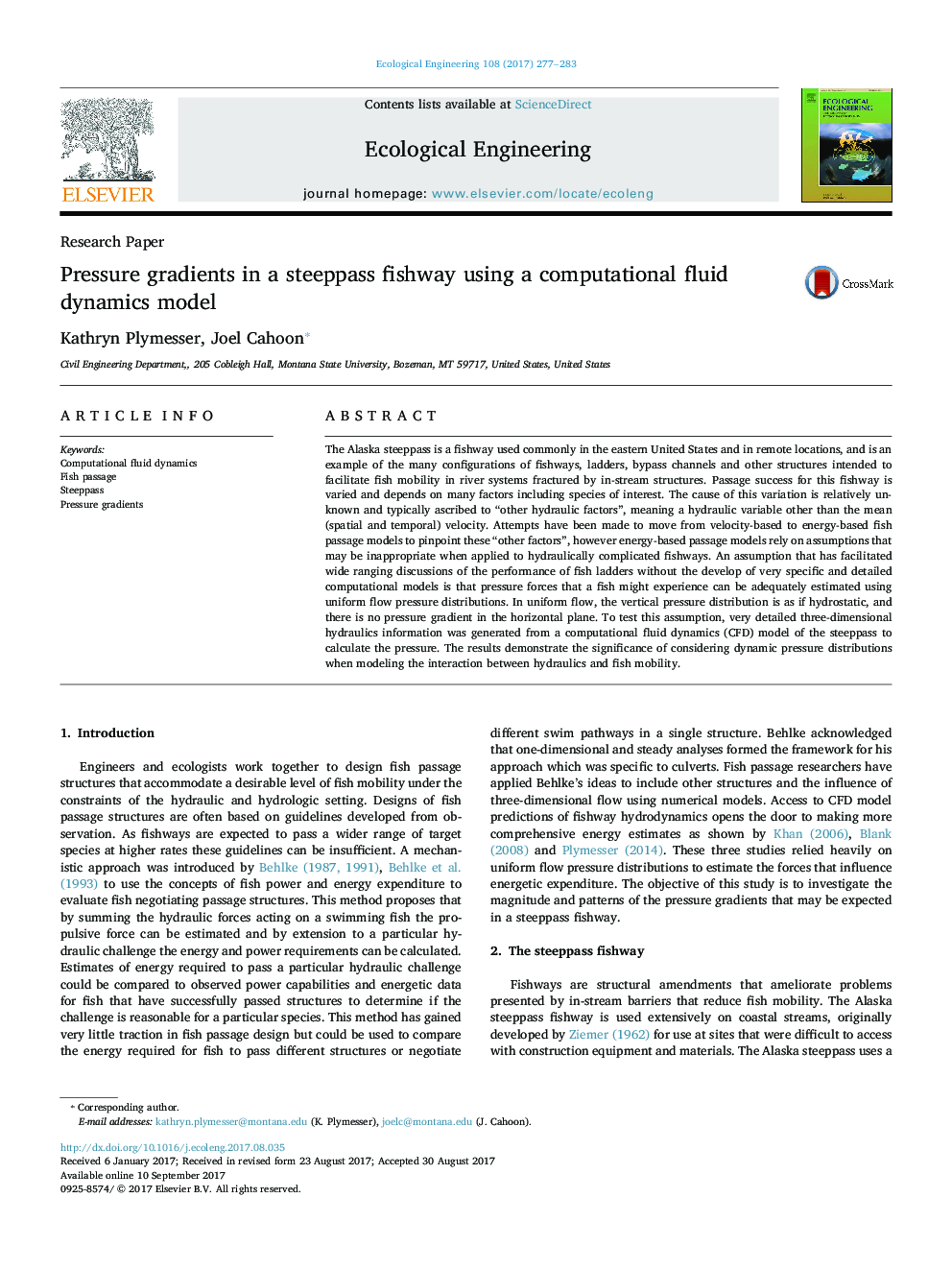| Article ID | Journal | Published Year | Pages | File Type |
|---|---|---|---|---|
| 5743542 | Ecological Engineering | 2017 | 7 Pages |
â¢A CFD model of the steeppass fishway was developed.â¢The pressure gradients in the fishway were calculated from CFD output.â¢CFD generated pressure gradients in the steeppass differed dramatically from traditional uniform-flow estimates.â¢Support for this project was provided by the Hydro Research Foundation Fellowship program.
The Alaska steeppass is a fishway used commonly in the eastern United States and in remote locations, and is an example of the many configurations of fishways, ladders, bypass channels and other structures intended to facilitate fish mobility in river systems fractured by in-stream structures. Passage success for this fishway is varied and depends on many factors including species of interest. The cause of this variation is relatively unknown and typically ascribed to “other hydraulic factors”, meaning a hydraulic variable other than the mean (spatial and temporal) velocity. Attempts have been made to move from velocity-based to energy-based fish passage models to pinpoint these “other factors”, however energy-based passage models rely on assumptions that may be inappropriate when applied to hydraulically complicated fishways. An assumption that has facilitated wide ranging discussions of the performance of fish ladders without the develop of very specific and detailed computational models is that pressure forces that a fish might experience can be adequately estimated using uniform flow pressure distributions. In uniform flow, the vertical pressure distribution is as if hydrostatic, and there is no pressure gradient in the horizontal plane. To test this assumption, very detailed three-dimensional hydraulics information was generated from a computational fluid dynamics (CFD) model of the steeppass to calculate the pressure. The results demonstrate the significance of considering dynamic pressure distributions when modeling the interaction between hydraulics and fish mobility.
